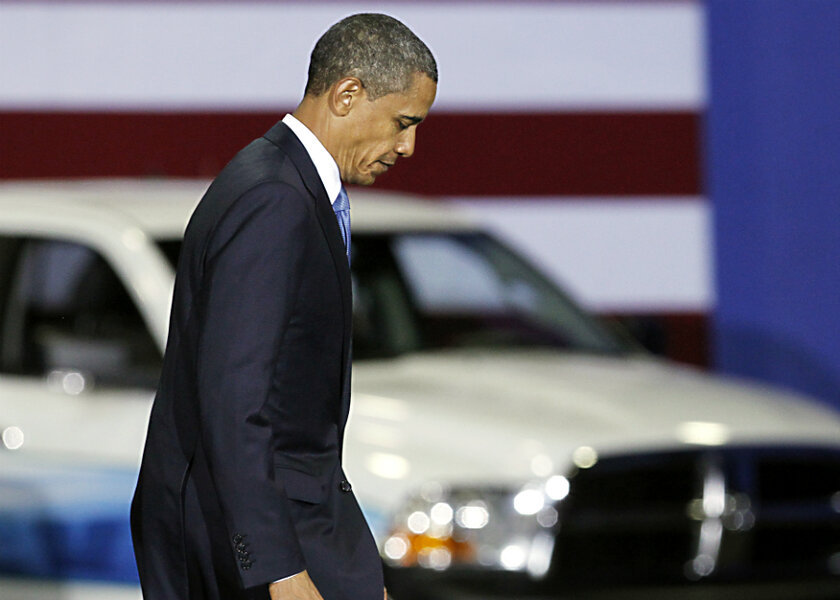Carmakers howl about fuel economy rules, but regularly beat them. Why?
Loading...
Last week, the US Environmental Protection Agency (EPA) said it would maintain current Corporate Average Fuel Economy (CAFE) standards for 2022 to 2025.
The decision was praised by environmental groups, but likely won't receive as warm a reception from the industry.
CAFE standards are up for a midterm review, and auto-industry lobbyists spent most of this past summer trying to conjure support for less-strict standards.
But it's not as if automakers are having trouble meeting today's emissions standards.
While the ramp-up of CAFE targets will get steeper in the next few years, automakers had not had issues with the rules so far.
In fact, they regularly beat CAFE targets.
For the 2015 model year, fuel economy reached an average 24.8 mpg, while carbon-dioxide (CO2) emissions dropped to 7 grams per mile. Both are record figures, according to the EPA.
This is the fourth consecutive year automakers have exceeded government standards, even as consumers flock to less-efficient SUVs.
The secret to automakers' ability to consistently beat government emissions standards may lie in a combination of technology, and the way regulations are written, as detailed in a recent Scientific American article.
One reason for automakers' current performance is increased use of efficiency-related technologies, including gasoline direct injection, transmissions with more gears, and lightweight materials, such as aluminum.
Many of these technologies have existed for years, but are now being applied to production cars on a large scale, argues Scientific American.
The EPA also took note of increased use of efficiency-boosting technologies in a July Technical Assessment Report (TAR), drafted in concert with other regulators, that measured automakers' progress in meeting emissions standards.
These technologies are so effective that, the report argued, they will likely allow automakers to meet upcoming emissions standards primarily with internal-combustion cars, without having to deploy large fleets of electric cars and hybrids.
By making extensive use of these technologies now, automakers can also accumulate emissions credits from overcompliance, and save them for when standards get stricter.
Standards are also less strict for SUVs, so the current sales boom may not be affecting automakers as much as it may seem.
In addition, there is enough ambiguity in the official definitions of vehicle categories for automakers to classify vehicles in ways that make it easier for them to meet efficiency standards.
For example, front-wheel drive versions of the Nissan Pathfinder are considered cars, while all-wheel drive versions are considered trucks, as far as the EPA is concerned.
Not every model is included in current efficiency standards, either.
Heavy-duty pickup trucks—those with a Gross Vehicle Weight Rating (GVWR) of 8,500 pounds—are notably absent.
That's why you will never see EPA fuel-economy ratings for vehicles like the Ford F-Series Super Duty, Chevrolet Silverado 2500 and 3500 HD, or Ram 2500 and 3500.
When current standards were first drafted, decades ago, it was inconceivable that individual consumers would buy such large vehicles for any kind of personal use.
But that is exactly what many current heavy-duty truck buyers do; the rules haven't yet changed to address that trend.
It is unclear whether the EPA will attempt to change its rules to include heavy-duty trucks, but the incoming Trump Administration's reaction to its decision to maintain existing 2022-2025 standards may be the more pressing matter.
There are many uncertainties regarding how the administration will address the myriad promises of radical policy change made by candidate Trump, but given his views on climate change and industry deregulation, it's likely CAFE standards could be in the line of fire.
This story originally appeared on GreenCarReports.







